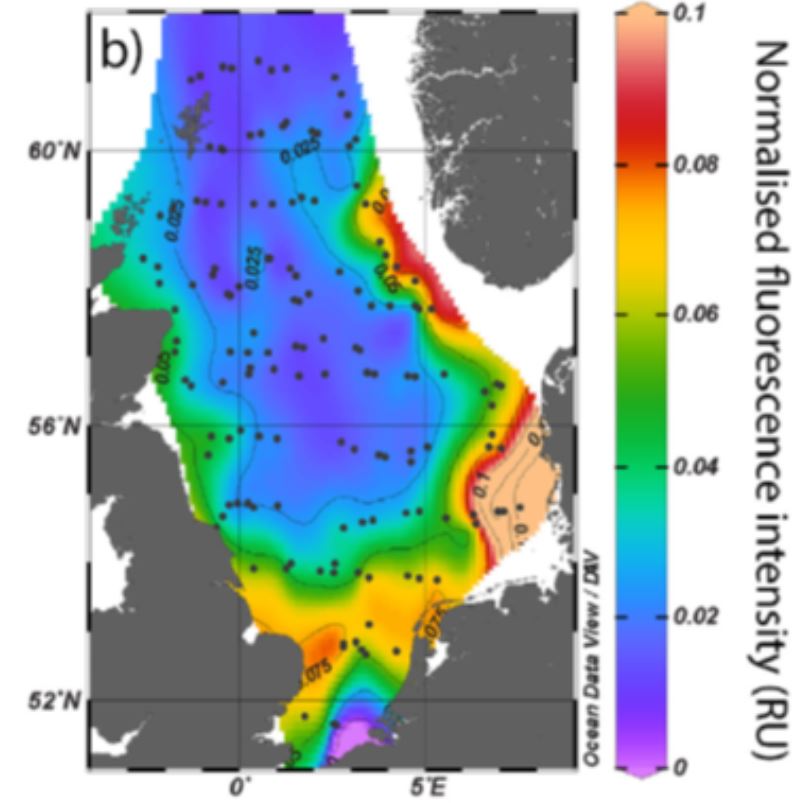The main objective of LOCATE was to quantify the fate of UK terrigenous organic matter from soils to the ocean.
The project focused on 40 rivers and 13 estuaries, which were carefully selected to represent the great variety of land cover across Great Britain.
Thus, three area types were selected:
- 17 rivers and four estuaries are located in Scotland, which contains a great proportion of Great Britain’s carbon-rich peatland areas and freshwaters.
- Eight rivers and five estuaries were selected to cover the Southern and Eastern of England which are areas converted to agricultural use with a low carbon content.
- 15 rivers, and four estuaries are located in the Northern England and Wales, which is an area with a mixture of peatland, pastures and agricultural land. Some of these rivers and estuaries are influenced by large cities, such as London, Edinburgh and Newcastle, which will improve the knowledge of the influence of urban areas to the organic matter inputs into coastal waters.
One river-estuary system (Halladale, Tamar and Conwy) from each area were selected for an intensive sampling to better characterize the processes occurring and the influence of the land-cover.
The different estuaries drain to the four shelf seas surrounding Great Britain (Northern Scotland, North Sea, English Channel and Irish Sea). The knowledge gained from the LOCATE sampling is relevant for coastal and marine researchers, as well as for national and local stakeholders, as the information gathered is complementary to existing monitoring programmes or other funded projects.
River sampling
LOCATE aimed to estimate the annual loss of terrestrial dissolved organic carbon along the land-ocean continuum. Forty rivers, draining 36% of the Great Britain landmass, and reflecting the overall land use of the whole of Great Britain, were sampled monthly during 2017. The survey collected data on dissolved and particulate carbon species including Dissolved Organic Carbon (DOC), the fluorescence properties and colour of Dissolved Organic Matter (DOM), Dissolved Inorganic Carbon (DIC) and a range of water chemistry indicators that are known to influence dissolved carbon concentrations. DOC yields (export per unit area) in the rivers were found to be positively related to and best predicted by rainfall, peat extent and forest cover. Based on an empirical relationship with land use and rainfall we estimate that the DOC export from the GB land area to the freshwater-seawater interface was 1.15 Tg C year−1 in 2017. The average yield for GB rivers is 5.04 g C m−2 year−1, higher than most of the world’s major rivers, including those of the humid tropics and Arctic.
Estuaries sampling
In addition to the river sampling, thirteen estuaries were sampled on a quarterly basis to assess the fate of dissolved carbon after leaving the river systems. Five sampling campaigns were conducted, three during 2017 (April, July and October) and two in 2018 (January and April) covering the different hydrological and seasonal conditions. The samples collected across the estuaries covered a wide range of salinities from riverine waters in the upper tidal limit, where there is no influence of marine waters, to the lower part of the estuary with a greater influence of marine waters. Result suggested that the land type of the estuarine catchments influenced the amount of terrestrial material reaching coastal waters. Estuaries draining catchments with high percentage of agricultural and urban land cover exported 50 % more organic material to coastal areas than they received from the rivers.
Sea sampling
The flow of land originated carbon to rivers and inland waters is a major term in the global carbon cycle but how much reaches the coastal ocean is poorly known.
A four-week survey of the North Sea was undertaken to map the distribution of terrestrial dissolved organic matter. Water samples were analysed for the absorbance and fluorescence resulting from the dissolved compounds present in seawater. As different dissolved compounds display different fluorescent properties analysis of the fluorescence and absorbance data can distinguish the presence of different types of organic material. This allowed identification of a terrestrial signal around the margin of the North Sea (figure below).
The results suggest that most of the terrestrial dissolved organic matter exported from the Northwest European and Scandinavian landmasses is ultimately buried or remineralized internally within the North Sea, though some may also be exported to the North Atlantic via Norwegian Coastal waters.

Find out more
